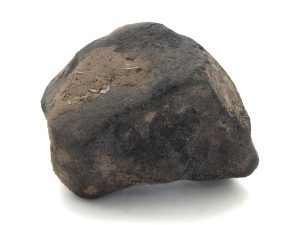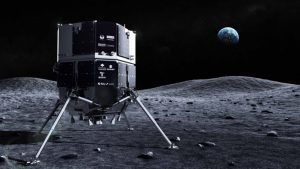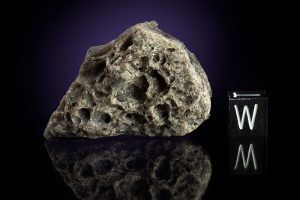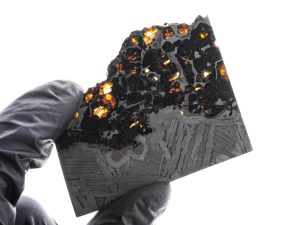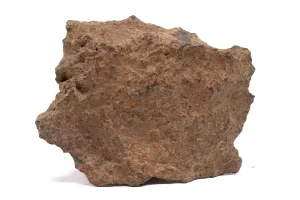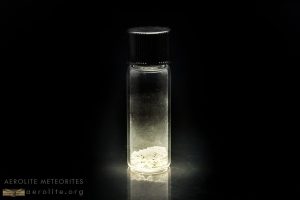Blog
What Are Meteorites?
Meteorites are fragments of asteroids or comets that have survived their passage through the Earth's atmosphere and have impacted the Earth's surface. These extraterrestrial rocks have fascinated humans for centuries and have provided valuable insights into the formation and evolution of our Solar System, approximately 4.6 billion years ago. According to current scientific understanding, the Solar System formed from a cloud of gas and dust that collapsed under its own gravity. As this cloud collapsed, it began to spin and flatten into a disk. The Sun formed at the center of this disk, and the remaining gas and dust eventually ...
Meteorites Science & ispace
In April 2023, private spaceflight company ispace launched the HAKUTO-R Mission 1 (M1) lander, meant to touch down in the Atlas crater on our Moon on April 25. ispace is a Japanese robotic exploration company that competed in the Google Lunar X Prize (GLXP), sometimes called Moon 2.0. They were awarded $500,000 for the Mobility Subsystem Milestone Prize, which aims to demonstrate a mobility system allowing a spacecraft to move 500 meters after landing. Had the launch of M1 been successful, it would have been the first lunar landing accomplished by a commercial mission. The lander launched on December 11, ...
What Are Tektites?
WHAT ARE TEKTITES? The idea that continents on Earth today had once constituted a “supercontinent” was prevalent in geologic studies. Pangea was the supercontinent that existed in the late Paleozoic era and was centered on the Equator, surrounded by a vast “superocean” called Panthalassa. Scientists estimate that Pangea was assembled approximately 335 million years ago and began breaking apart about 175 million years ago. Further studies posit that before Pangea, another supercontinent existed in the Neoproterozoic era, about 550 million years ago, called Gondwana. According to some theories, Gondwana and Euramerica (another continent), merged to form Pangea. The supercontinent was ...
Libyan Desert Glass
Libyan Desert Glass Libyan Desert Glass (LDG) are mysterious, honey-colored glass fragments that lie on the majestic sand dunes in western Egypt. The region was discovered in 1932 and is relatively inaccessible to human beings. Despite the challenges presented by the jagged desert landscape, the area has seen at least 10 expeditions since 1932. It’s hard to say when, exactly, human beings discovered Libyan Desert Glass; a jewel-encrusted breastplate recovered from King Tutankhamun’s tomb boasts a beautiful scarab, carved from golden Libyan Desert Glass. The origin of these glasses was, for a long time, considered a mystery; scientists estimated that ...
The Seymchan Meteorite
THE SEYMCHAN PALLASITE The modern Seymchan settlement began in 1940; during World War 2, an airfield was built there to allow aircraft to be delivered there through the Lend-Lease program, whereby the USA would supply the United Kingdom, Free France, the Republic of China, the Soviet Union, and other Allied nations with supplies like food, oil, and weaponry. In 1949, and through 1955, a sub-settlement located a few kilometers south housed the Dalstroy prison camp, part of the Gulag camp network. Dalstroy was also called the “Far North Construction Trust” and used prisoners in the mining of gold and tin, ...
The Tucson Gem Show is On!
2021 TUCSON GEM SHOW Our team is gearing up for the 2021 22nd Street Mineral, Fossil, Gem & Jewelry Show in April–that's right, the gem show is on! . The show was postponed to April 8-25 for vendor and customer safety and we, along with all 22nd Street Show vendors, are taking every possible precaution to ensure the well-being of everyone who attends the show. The staff at Eons Expos, who put on the show, have run two successful gem shows in Denver and New York/New Jersey without a single case of COVID-19 being contracted by a vendor or customer. . Some of their safety precautions ...
The Tsarev Russian Meteorite
The Tsarev Stony Meteorite Witnessed meteorite falls are some of the most spectacular events that occur in the natural world. That an event so rare is also actually seen to occur by human beings is almost equally as unbelievable, but they do happen. Advances in video technology, and how widely available dashcams and home security cameras are, allow us to witness more and more meteorite events. Before the ability to record video became widely available to the general population, however, people had other means of reporting fireballs and strange occurrences in the sky. Scientists have found petroglyphs in ancient dwellings ...
Odessa Meteorite Crater
ODESSA METEORITES Imagine stumbling across a meteorite crater! Craters are pretty delicate - like everything else on Earth, they are at the mercy of their environment and many of them have been eroded away by the elements. The Wabar craters, for example, in Saudi Arabia have slowly disappeared over time because the shifting sands have filled them in. Even still, craters are some of the most fascinating geological features on our planet’s surface and new ones are still being discovered today. In 1892, a rancher looking for a lost calf on horseback had one such experience. He found not only the ...
Admire Kansas Meteorite
ADMIRE METEORITES Gemstones from Outer Space The Admire meteorite was found in 1881 in Kansas by a farmer plowing a field. It’s named after the city of Admire in Lyon County (meteorites are named for the places they were found). You might think Kansas–or more generally, the Midwest–is a hot spot for meteorite falls. Meteorites, however, fall randomly across the surface of our planet, and they could land anywhere. Why, then, do so many meteorite finds happen in Kansas? It’s a combination of factors; the soil in Kansas contains very few indigenous stones. The Kansas soil is also very fertile, so it’s farmed intensely ...
Where to Buy Mars Meteorite Dust
Where to Buy Mars Meteorite Dust? If you’ve seen The Martian, you might recall scenes where astronaut Mark Watney treks through the Martian surface, kicking up fine red dust as he goes. Dust from other planets is particularly interesting to scientists, as it’s relatively easy to collect – as far as taking samples from another planet goes – and contains a wealth of information we can use to better understand the planets in our solar system. The first spacecraft to land on the Martian surface and sample its soil was Viking 1, which used a robotic arm and a special ...
